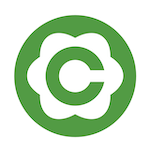
Welcome to People Personas
Borrowing the phrase “six degrees of separation” which means that everyone in the world is connected to everyone else through a chain of no more than six friends. With the internet and social media, we can make these connections much faster. Now, people often say we are just “pixels away” between intermediate acquaintances and someone we know…
Let’s focus on building personas for a content marketing strategy.
To start, we need to identify the primary goals of our content marketing efforts.
What are the primary goals of your content marketing strategy?
Here are some potential and common goals to consider. Of course you can customize to suite your own specific goals:
Lead generation:
- Attracting and converting potential customers.
Brand awareness:
- Increasing visibility and recognition.
Customer engagement:
- Building relationships and fostering loyalty.
Thought leadership:
- Establishing expertise in the industry.
Once you have a clear understanding of your goals, you can start to define your target audience and create detailed personas.
easy steps towards defining personas for content marketing:
| Step | Description | Actionable Tips |
|---|---|---|
| 1. Conduct Research | Gather information about your existing customers and target audience. | Use surveys, interviews, and analytics tools to collect demographic, psychographic, and behavioral data. |
| 2. Identify Key Characteristics | Define demographic, psychographic, and behavioral attributes of your audience. | Create a list of attributes such as age, gender, location, income, values, interests, and online habits. |
| 3. Segment Your Audience | Group your audience into segments based on shared characteristics and behaviors. | Use tools like customer segmentation software or manually group similar profiles. |
| 4. Develop Persona Profiles | Create detailed profiles for each segment, outlining key characteristics, pain points, and goals. | Write narratives for each persona, giving them a name, job title, background story, and specific traits. |
| 5. Identify Content Preferences | Determine the preferred content formats and topics for each persona. | Analyze past engagement data and ask directly through surveys about their content preferences. |
| 6. Map Out Buyer’s Journey | Understand the stages each persona goes through from awareness to decision. | Create a buyer’s journey map for each persona, detailing their needs and questions at each stage. |
| 7. Create Targeted Content | Develop content that addresses the specific needs and interests of each persona at each stage. | Tailor your content strategy to include blogs, videos, infographics, etc., that align with persona preferences and journey stages. |
| 8. Test and Refine Personas | Continuously test the effectiveness of your personas and refine them based on feedback and data. | Monitor performance metrics and gather ongoing feedback to make necessary adjustments. |
Key Persona Characteristics
When developing personas for content marketing, it’s important to include the following information:
Demographic information:
Age,
gender,
location,
income,
education,
occupation
Psychographic information:
Values,
beliefs,
attitudes,
interests,
lifestyle
Behavioral information:
Online habits,
purchasing behavior,
media consumption
Content preferences:
Preferred content formats (blog posts,
videos,
infographics,
etc.), topics of interest
Pain points and challenges:
What problems are they trying to solve?
Goals and aspirations:
What are they trying to achieve?
Buyer’s journey stage:
Awareness,
consideration,
decision
As you can see, there are many factors to consider in order to readily filter and refine your audience into segments.
Understanding these key characteristics will help you create more targeted and effective content that resonates with your audience.
By combining demographic, psychographic, and behavioral information with an understanding of your audience’s content preferences, pain points, goals, and where they are in the buyer’s journey, you can develop comprehensive personas that guide your marketing efforts.
This holistic approach ensures that your content not only reaches the right people but also engages them in a meaningful way, driving better results for your business.
Content Marketing Personas Example
To illustrate, let’s create two hypothetical personas for a B2B SaaS company offering a marketing automation platform.
Persona A: The Busy Marketer
Job title:
Marketing Manager
Goals:
Increase lead generation,
improve marketing ROI
Challenges:
Limited resources,
time constraints,
complex marketing technology
Content preferences:
How-to guides,
case studies,
webinars,
email templates
Buyer’s journey stage:
Consideration and decision
Persona B: The Tech-Savvy Startup Founder
Job title:
Founder/CEO
Goals:
Rapid growth,
scalability,
efficient operations
Challenges:
Limited budget,
building a marketing team,
competing with larger companies
Content preferences:
Industry trends,
thought leadership articles,
product demos,
free trials
Buyer’s journey stage:
Awareness and consideration
By understanding these personas, you can create content that addresses their specific needs and interests, increasing the likelihood of engagement and conversion.
